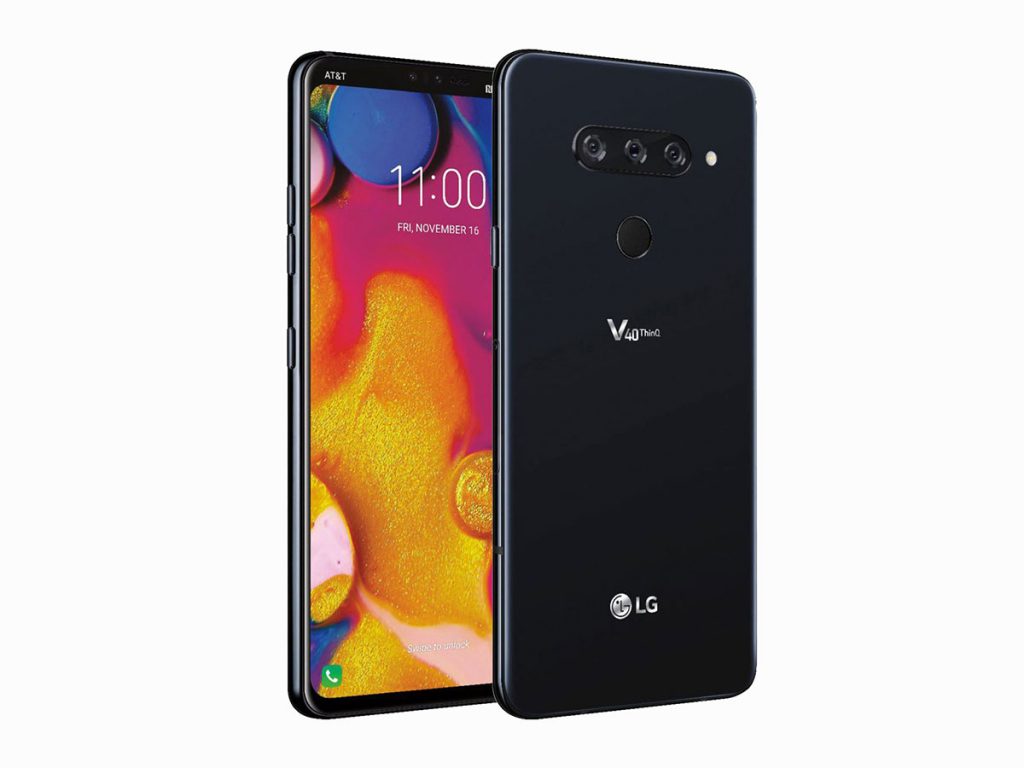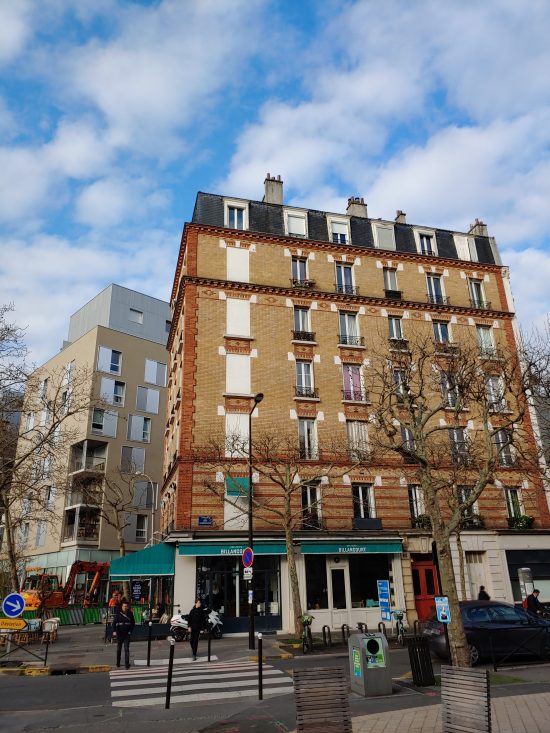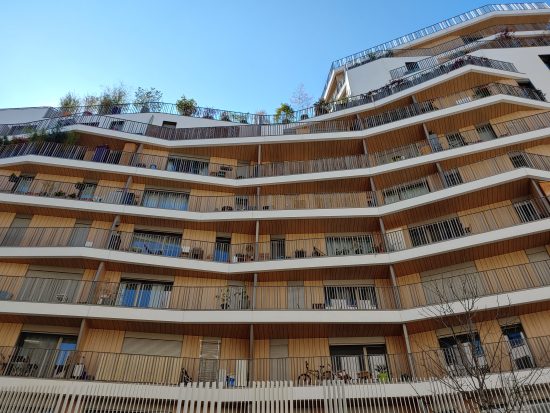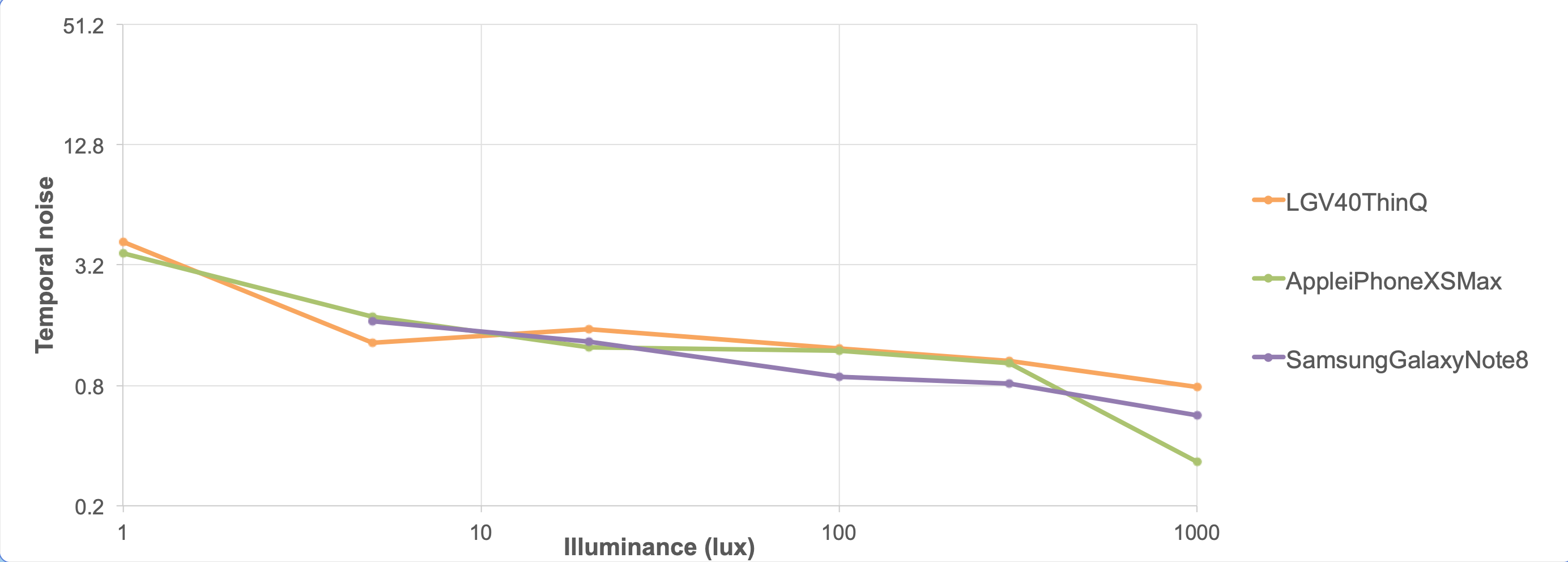Please note: In September 2019, we updated the DXOMARK Mobile test protocol to cover ultra-wide-angle performance and renamed the protocol DXOMARK Camera. We also expanded our low-light testing and created the new Night sub-score, which incorporates the previous Flash score. We have retested this device using the new Wide and Night test protocols and updated the scores in this review, but we have not changed the text from the original review. For more information, please see the articles about our new Wide and Night test protocols.


LG V40 ThinQ camera review (originally published April 17, 2019)
When the LG V40 ThinQ first appeared in late 2018, its 5-camera offering (3 rear, 2 front) raised eyebrows and expectations. The triple-cam on the rear was also the first to offer a focal range with an ultra-wide (16mm-equivalent) to 2x tele-lens. In addition to its multi-cam array, the V40 comes equipped with a Qualcomm Snapdragon 845 chipset and octa-core processor and a 6.4-inch QHD+ OLED display. Let’s take a look at how well its camera performed in our DxOMark Mobile tests.
Key camera specifications:
- Triple camera setup
- Ultra-wide: 16Mp sensor with f/1.9, 16mm-equivalent lens, no AF
- Primary: 12Mp sensor with f/1.5, 27mm-equivalent lens, OIS and dual-pixel PDAF
- Tele: 12Mp sensor with f/2.4, 52mm-equivalent lens, OIS and PDAF
- 4K video at 60fps (1080p at 30 fps at default settings)
Please note: The LG V40 ThinQ review and scores have been updated after we discovered an error in our exposure testing. The exposure score was increased from 83 to 88 points. This also increased the Photo score from 96 to 98 and the overall DxOMark score from 93 to 94 points.
About DxOMark Mobile tests: For scoring and analysis in our smartphone camera reviews, DxOMark engineers capture and evaluate over 1500 test images and more than 2 hours of video both in controlled lab environments and in natural indoor and outdoor scenes, using the camera’s default settings. This article is designed to highlight the most important results of our testing. For more information about the DxOMark Mobile test protocol, click here. More details on how we score smartphone cameras are available here.
Test summary
Achieving an overall DxOMark Mobile score of 94 points, the LG V40 ThinQ generally showed a marked improvement over the last LG device we tested, the LG G7, which appeared some six months before (in May 2018). With a Photo score of 98 points, the V40’s strongest points for stills photography are for exposure and contrast, color, and autofocus. At 87 points, its Video performance is good as well, particularly for color and detail.
Color is, in fact, one of the V40’s strongest points, with generally neutral white balance. Although the V40 sometimes renders the sky more cyan than blue, this may well be a matter of color signature rather hue shift per se. The V40’s white balance indoors is generally also neutral, though there can be a very slight yellow-greenish cast.
As for exposure and contrast, the V40 does very well in most lighting conditions. Backlit shots, such as the Eiffel Tower shot below, can show noticeably haloing around high-contrast edges, however. Some highlight detail can be lost in the background of backlit portraits but face exposure is usually acceptable.
Overall dynamic range is decent but if you look closely at the high-contrast samples below the shadow areas are a little less controlled than on the Apple iPhone XS Max, with higher noise levels and a more noticeable loss of detail.
Although it’s not on par with the best in class, the LG V40 ThinQ preserves detail fairly well in outdoor conditions, and it controls noise pretty well indoors and in low light in relatively flat dynamic scenes. In high-contrast indoor scenes, chromatic noise is visible, however. And while the V40’s HDR in non-backlit scenes is fairly good when activated, images still exhibit noise in dark areas.
The V40’s flash performance is acceptable in all but the darkest conditions, but red-eye is very apparent in all flash portrait shots.
The V40’s performance for bokeh was a bit of a disappointment: despite its multiple cameras, its score is lower than that of the slightly older LG G7, largely due to mapping errors. If you look closely at the sample photo below, you can see that the model’s right ear is inappropriately blurred, and in the crop, you can see that the upper-left part his hair blends into the background. On the plus side, the V40 applies blur to the foreground as well as to the background.
The addition of a tele-lens is a welcome development. Of course, LG engineers will need to tune the feature further, particularly in terms of noise and artifact control, so as to boost the performance in subsequent models. The difference in the results is completely obvious between the LG G7 and the V40 in the closeups below; and while at first glance the V40 seems to be on par in many ways with iPhone XS Max, closer inspection reveals the V40’s over-sharpening and intrusive ringing.
We’ve mentioned ringing and halos but some V40 ThinQ images also show a hue-shift toward cyan close to clipped areas in blue skies as you can see in the sample below. In addition the image is noticeably softer close to the edges to the frame compared to the center.
As for video, the V40 puts in a good performance, particularly in terms of color and details. In fact, with the exception of noise control, it actually outperforms the Galaxy Note 8 for video overall. This said, however, it shows some instabilities in autofocus, and target exposure is sometimes low in outdoor footage. Further, as the graph below shows, while the V40 has a brief moment of glory a little above 5 lux, when it handles temporal noise a bit better than the competition, it loses that edge as light increases.
Finally, the stabilization system wasn’t quite capable of eliminating all camera motion when panning or filming when walking, resulting in some shakiness of the recorded footage; but overall, all but the most demanding videographers will be satisfied with the V40’s video performance.
Conclusion
With scores on par with the Galaxy Note 8, which came out in 2017, the LG V40 ThinQ marks a significant improvement over the G7 in most areas. Although it cannot yet compete with recent high-end models, the addition of its first-ever zoom shows that it’s clearly on an upward track. We are looking forward to seeing further improvements in the recently-released LG G8, which we plan to test in the very near future.
Photo pros
- Target exposure is accurate in indoor conditions.
- Colors are generally vivid and pleasant in all conditions.
- Noise is well-controlled in scenes with limited dynamic range.
- Details are well-rendered in outdoor conditions.
- Zoom: decent detail-noise tradeoff in outdoor and indoor conditions.
Video pros
- Autofocus is fast.
- Accurate target exposure in indoor and lowlight.
- Colors are vivid and pleasant.
- Details are well-preserved in indoor conditions.
Video cons
- Focus instabilities are sometimes visible.
- Target exposure can be slightly low in outdoor high-contrast conditions.
- Luminance noise is visible in most conditions.
- Visible frame shift in walking scenes.

















DXOMARK encourages its readers to share comments on the articles. To read or post comments, Disqus cookies are required. Change your Cookies Preferences and read more about our Comment Policy.